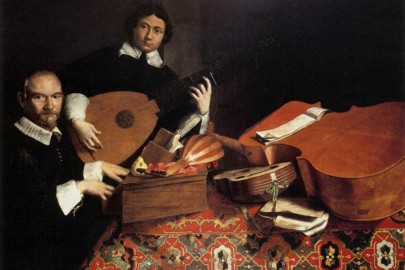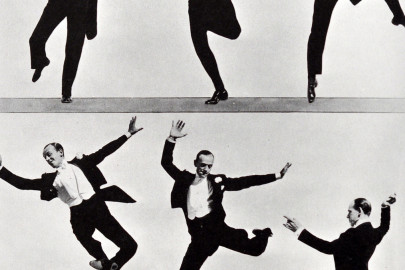This Sunday Mahlerman revives four masterful symphonies that have ‘somehow slipped through the net of recognition and lie, unknown and unloved, on the coroner’s slab’…
If, unlike Igor Stravinsky, you accept that symphonic music is capable of ‘saying something’, you would probably agree that the high point of symphonic music was born in the 18th Century with the symphonies of Mozart, Haydn and Beethoven. The word ‘symphony’ simply means ‘sounding together’, which helps not at all – but does offer a clue to the universality of the form. To ‘make’ a symphony takes a lot of intellectual rigor from the composer and, collectively, a great deal of perspiration and, eventually inspiration by often up to one hundred people, to turn the dots on the score into aural reality, in a room that will accommodate them and allow space for a paying audience to come and listen. Profit is a word rarely heard in the concert halls of today – and it was ever thus. The struggle we hear in greatest music of Beethoven, the sense that it was hewn out of a rock-face, is a testimony to the effort required to bring it forth – and it galled this heroic master that a lesser talent, Rossini, could make several fortunes with his tuneful operas and overtures, full of froth and fun as they were.
So – is it too fanciful to say that a symphony orchestra playing together seems to be a picture of a society in which every member supports the others? Is it this intangible that keeps intact the mystery of a great symphony, and why it can affect us so profoundly?
Today, in keeping with the spirit of these posts, I would like to suggest a handful of truly masterful symphonies that have somehow slipped through the net of recognition and lie, unknown and unloved, on the coroner’s slab. It is said that all things are possible (except skiing through a revolving door), and perhaps the day will dawn when all seven of the marvellous symphonies of Sir Arnold Bax will fill our concert halls, as those of Gustav Mahler do today (but didn’t fifty years ago) but I, for one, am not holding my breath.
There was much more to the Parisian Paul Dukas than the ubiquitous potboiler L’apprenti sorcier, good though that symphonic poem is. His problem, as with his near-contemporary and next in the alphabet Henri Duparc, was a nervous susceptibility to the influence of other musicians, leading him to seriously underrate his own creative gift and, ultimately, to destroy more compositions than survived him – as did Duparc. The remarkable Symphony in C major, published in 1896 when the composer was just thirty-one, languishes in near total neglect. Here are the last few measures of the languorous second movement Andante espressivo e sostenuto, with the chromatic sound-world of Wagner looming large, but couched in a language that is all his own.
Not quite reaching his half-century in years and, like Dukas, falling under the unmistakable influence of Richard Wagner, another Parisian Alberic Magnard died at the start of the Great War when German invaders set fire to his country house. In the previous year he had completed his opus 21, the grave but magical Symphony No 4 in C sharp minor. But neither this important work, or the three symphonies that came before – or indeed any of this composer’s music, has managed to ‘break through’ either in France or anywhere else; a mystery. The only explanation I can put forward is that while he was alive, and being the son of a powerful newspaper owner, he recoiled from any suspicion of nepotistic influence to the point of paranoia and, by extension, made no effort to promote his own highly original compositions. Here are the closing pages of the third movement, marked Sans lenteur et nuance.
Unless you have a particular affection for music from the frozen wastes of the Baltic, you probably haven’t heard any music by the Estonian Eduard Tubin, and may never even have heard his name uttered, but his eleven symphonies, which form the backbone of his life’s endeavour, are powerful statements, imbued as they are with expansive melody and propulsive rhythms; amazing that such music is never heard in the concert-hall, and rarely recorded. The soundscapes evoked by Tubin’s music are the lonely landscapes of Sibelius, and a certain kinship with the folk idioms of the Hungarian, Bela Bartok – with perhaps a tincture of the Celtic twilights of Bax. His Symphony No 2 in B minor ‘The Legendary’ contains a second movement in ‘arch form’ ( a slow crescendo followed by a decrescendo), which is marked Sostenuto Assai – Grave e Funebre. See if you agree that this is music that should be heard more often than…..never?
The competition for a place in this quartet of nobodies was intense with, from another age, Bizet rubbing shoulders with Dvorak’s son-in-law Suk, a Schmidt against a Schmitt, and a large group already well represented in these pages – Korngold, Myaskovsky, Roussel, Martinu and Honegger. But to include the music of the late (he died last year, age 97) Henri Dutilleux I have had to change my own rules for inclusion (it’s my party..etc). It is not that we never hear his two symphonies, but we don’t hear them nearly enough. Both are unquestioned masterpieces, lying in a direct line from Debussy and Ravel. The Second Symphony is sub-titled ‘Le Double’ with good reason as it is scored, in effect, for two orchestras – one a chamber ensemble sitting directly in front of the conductor, with the main body of the band fanning out in the usual way. From this wonderful work, the last few pages, marked ‘Calmato’, dissolving into nothingness, and giving the lie to Philip Hensher’s unkind remark in the Daily Telegraph that Dutilleux was ‘the Laura Ashley of music’.












Thanks for pointing me in the direction of the Dukas. I’ll also have to give Tubin another try.
I agree the Magnard is an underrated composer and have loved his 3rd Symphony ever since I heard a Radio Three broadcast, over 30 years ago. It has more good tunes than ‘Hooked on Classics’ and has a wonderful, majestic opening.
I think I’ll go and play it now.